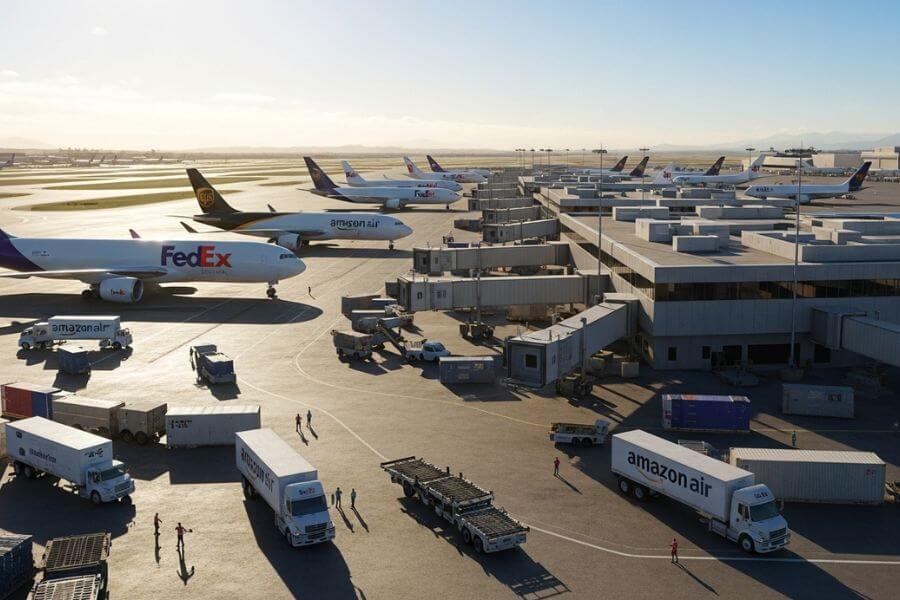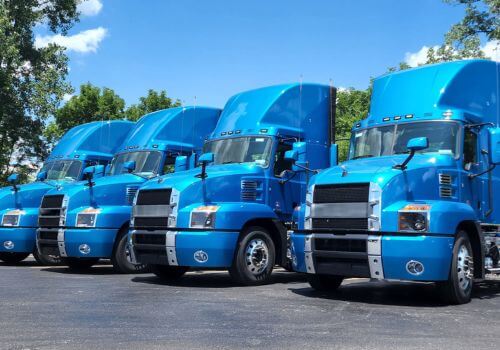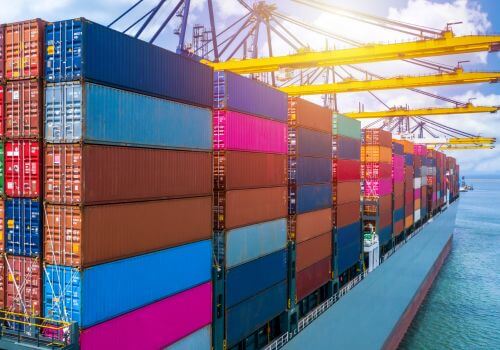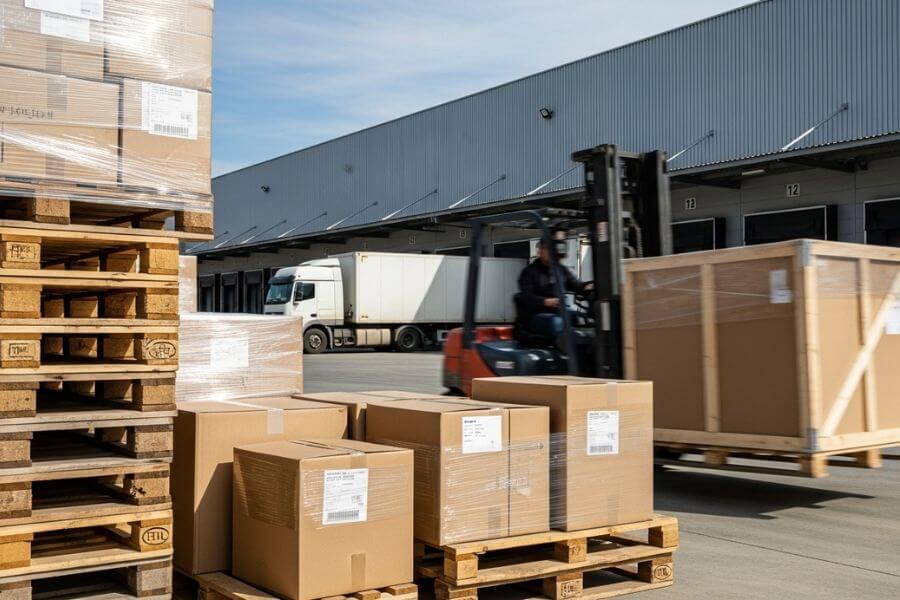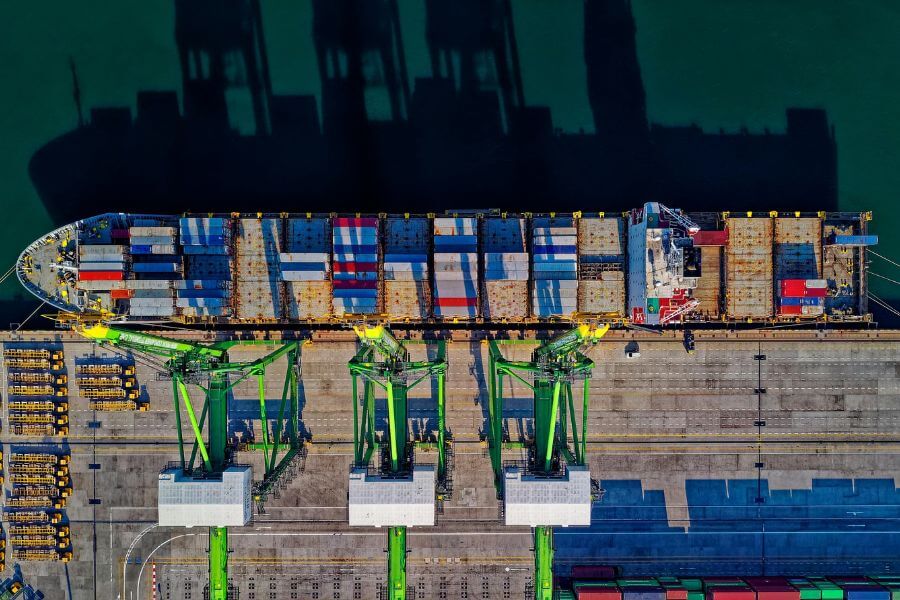When it comes to global trade, speed and reliability are everything, and air cargo is the backbone of that efficiency. The United States, one of the world’s largest economies, is home to some of the busiest and most advanced cargo airports. These airports play a crucial role in connecting industries, e-commerce, and consumers across continents.
From handling millions of tons of freight to supporting major logistics companies like FedEx, UPS, and Amazon Air, these airports form the arteries of America’s supply chain. In this comprehensive guide, we’ll explore the top 10 largest cargo airports in the U.S., ranked by freight volume, infrastructure, and importance to both domestic and international trade.
1. Memphis International Airport (MEM)
Annual cargo volume: Over 4.8 million metric tons
Memphis International Airport consistently ranks as the largest cargo airport in the United States and one of the busiest in the world. Its dominance comes largely from being the global “SuperHub” for FedEx Express, which operates an enormous sorting facility on-site.
- FedEx world hub: FedEx’s overnight global operations center handles over 180 aircraft and 2 million packages daily.
- Strategic location: Centrally located, making it ideal for coast-to-coast overnight delivery.
- 24/7 operations: Minimal weather disruptions and efficient infrastructure enable continuous cargo movement.
Beyond FedEx, Memphis serves other logistics companies and industries such as pharmaceuticals, electronics, and automotive parts. The airport has undergone continuous expansion to enhance automation and sustainability, keeping it at the forefront of cargo logistics innovation.
2. Ted Stevens Anchorage International Airport (ANC)
Annual cargo volume: Around 3.6 million metric tons
Anchorage might seem like an unexpected entry, but its strategic polar location makes it a vital stop for trans-Pacific and trans-Atlantic cargo flights. Roughly 80% of air cargo between North America and Asia passes through Anchorage for refueling or transfers.
- Ideal geography: Located within 9.5 flight hours of 90% of the industrialized world.
- Efficient turnarounds: Anchorage specializes in rapid aircraft refueling and crew changes.
- Global connectivity: Serves as a key link for carriers like UPS, FedEx, and Atlas Air.
The airport’s infrastructure supports large freighters like the Boeing 747 and Antonov An-124, making it essential to global trade networks. Despite its remote location, ANC ranks among the world’s top five busiest cargo airports by tonnage.
3. Louisville Muhammad Ali International Airport (SDF)
Annual cargo volume: Over 3 million metric tons
Home to the UPS Worldport, Louisville is a powerhouse in cargo logistics. The airport’s operations are dominated by UPS, which has established one of the largest fully automated package handling facilities in the world here.
- UPS Worldport: Handles over 400,000 packages per hour.
- Centrally located: Within a two-hour flight of 75% of the U.S. population.
- 24-hour operation: Streamlined customs processes and fast connections.
SDF has invested heavily in automation, sustainability, and infrastructure upgrades. This airport plays a key role in supporting e-commerce growth, especially for businesses relying on overnight and two-day shipping across the country.
4. Miami International Airport (MIA)
Annual cargo volume: About 2.4 million metric tons
Miami International Airport serves as the primary air cargo gateway between the U.S. and Latin America. It’s a crucial hub for perishable goods, electronics, textiles, and pharmaceuticals.
- Strategic Latin American hub: Over 80% of U.S. air trade with Latin America passes through MIA.
- Diverse cargo mix: Leading airport for perishables like flowers, seafood, and fruits.
- Robust infrastructure: Equipped with over 3 million square feet of cargo facilities.
MIA’s proximity to Latin America and its advanced cold-chain capabilities make it indispensable for temperature-sensitive cargo. The airport’s focus on modernization and customs efficiency also enhances its competitive edge in global trade.
5. Los Angeles International Airport (LAX)
Annual cargo volume: Around 2.3 million metric tons
LAX is not just one of the busiest passenger airports; it’s also a major cargo hub for the West Coast. As a gateway to the Asia-Pacific region, it facilitates trade with countries like China, Japan, and South Korea.
- Gateway to Asia: Ideal for trans-Pacific cargo routes.
- Strong infrastructure: Over 2 million square feet of cargo facilities.
- E-commerce hub: Key point for imports related to consumer goods and technology.
Major cargo operators include FedEx, UPS, DHL, and Amazon Air. LAX is investing heavily in sustainability and automation projects, aiming to improve freight handling and reduce congestion around its cargo terminals.
6. Chicago O’Hare International Airport (ORD)
Annual cargo volume: Over 2 million metric tons
Chicago O’Hare International Airport stands as the Midwestern epicenter of U.S. cargo logistics. Its central location, rail and highway connectivity, and vast logistics infrastructure make it an essential part of the national supply chain.
- Central U.S. location: Ideal for both domestic and international routes.
- Air cargo center: Over 2.5 million square feet dedicated to cargo operations.
- Major carriers: FedEx, UPS, United Cargo, and Nippon Cargo Airlines.
ORD continues to expand its cargo facilities through the Northeast Cargo Development Project, adding modern warehouses and logistics technology to accommodate rising demand, particularly in e-commerce and pharmaceuticals.
7. Cincinnati/Northern Kentucky International Airport (CVG)
Annual cargo volume: Around 1.6 million metric tons
CVG has rapidly become one of the fastest-growing cargo airports in the U.S., thanks to Amazon Air’s Prime Air Hub and a strong presence from DHL Express. It’s now one of the top air freight hubs in North America.
- Amazon Air hub: Supports the e-commerce giant’s national logistics network.
- DHL Express Superhub: Handles international air cargo across the Americas.
- Strategic position: Serves the Midwest and Eastern U.S. efficiently.
CVG’s dual role as a hub for DHL and Amazon has created thousands of jobs and positioned it as a leader in digital logistics innovation. Continuous infrastructure investments signal that CVG’s cargo capacity will only increase in the coming years.
8. Indianapolis International Airport (IND)
Annual cargo volume: Over 1.3 million metric tons
Indianapolis International Airport is home to the second-largest FedEx Express hub worldwide, second only to Memphis. Its modern facilities and location in the Midwest make it vital for time-sensitive deliveries.
- FedEx Midwest hub: Processes millions of packages weekly.
- Efficient design: Easy ground transportation links to major U.S. highways.
- Technology focus: Implements AI and robotics to enhance logistics speed.
In addition to FedEx, IND supports other carriers and logistics providers catering to the automotive, pharmaceutical, and retail sectors. Its reliability and weather resilience make it a top performer in air freight operations.
9. Dallas/Fort Worth International Airport (DFW)
Annual cargo volume: About 1.1 million metric tons
As one of the largest airports in the U.S., DFW is a key cargo hub connecting North America, Europe, and Asia. It plays an important role in global trade, particularly for electronics, pharmaceuticals, and high-value consumer goods.
- Strategic trade routes: Central location for domestic and international flights.
- Cargo infrastructure: 2 million square feet of warehousing and logistics space.
- Foreign trade zone: Incentives for importers/exporters through FTZ #39.
DFW has become a major destination for international cargo carriers like Qatar Airways Cargo and Emirates SkyCargo. The airport continues expanding to meet increasing global freight demands, solidifying its place in the logistics landscape.
10. John F. Kennedy International Airport (JFK)
Annual cargo volume: Around 1 million metric tons
Rounding out the list is JFK, the busiest international gateway in the U.S. It handles a massive amount of high-value and time-sensitive cargo, including electronics, jewelry, pharmaceuticals, and perishables.
- Global access: Direct flights to over 100 international destinations.
- Cargo terminals: 4 million square feet of dedicated cargo facilities.
- Specialized handling: Cold-chain storage and secure freight services.
JFK is the primary cargo hub for the Northeastern U.S., supporting international carriers like Korean Air Cargo, Lufthansa Cargo, and Cathay Pacific. Ongoing infrastructure upgrades and redevelopment projects aim to transform JFK into a next-generation cargo facility.
Conclusion
The largest cargo airports in the United States form the core of the nation’s logistics and trade ecosystem. From Memphis’s FedEx hub to Anchorage’s global crossroads, each airport contributes uniquely to keeping goods moving efficiently across the world.
In an era of rapid globalization and instant delivery expectations, these airports don’t just move freight they move the economy. Their continued innovation, expansion, and adaptation ensure that the U.S. remains a global leader in air cargo logistics for decades to come.

